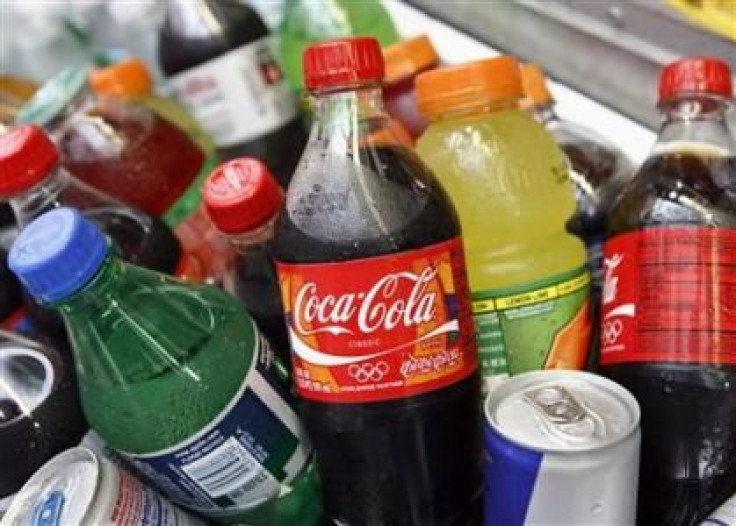Bloomberg's Soda Ban Takes Effect: A Look Back At The Mayor's Previous 'Nanny State' Health Campaigns

[Update 3/11/2013, 3:24 pm: Reports of the death of big sodas may have been exaggerated. Wall Street Journal reporter Michael Howard Saul tweeted this afternoon that a New York state judge has struck down the city's large sugary drink ban.]
If there’s anyone in New York City pining for a 32-ounce Coke at the movies, drink now or forever hold your peace: Mayor Michael Bloomberg’s big soda clampdown takes effect on Tuesday. Hizzoner’s three-term reign has produced a long roll of health-related initiatives, all of which, like this latest sugary soda crackdown, have met with no small amount of sound and fury.
One of Mayor Bloomberg’s first major health initiatives was the Smoke Free Air Act of 2002, which eliminated smoking in almost all workplaces, including bars and restaurants. In 2009, the SFAA was expanded to push smoking away from the grounds and entrances of hospitals. In May 2011, New York City eliminated smoking in parks, beaches and pedestrian plazas. The city also offers tips on quitting smoking on its 311 hotline.
Since New York City became one of the leaders in smoking restrictions, many other cities and states have followed suit. As of December 2012, 28 U.S. states have imposed bans on smoking in most enclosed public places. New Yorkers have also been puffing at much lower rates – in 2011, the mayor’s office touted stats showing that just 14 out of 100 New York City residents smoked, a 35 percent drop since 2002.
Then in the the mid-2000s, Mayor Bloomberg cast his disapproving eye on trans fats. These unsaturated fats have been linked to an increased risk for coronary heart disease, thanks to their ability to raise “bad” cholesterol levels and lower “good” cholesterol levels. The city Board of Health voted to ban trans fats in restaurants in December 2006. While food establishments are largely complying with the ban, the scientific jury's still out on whether or not the ban has improved New Yorkers’ cholesterol levels.
In 2006, New York City’s Board of Health also voted to require restaurants with more than 15 locations in the city to post calorie information for their foods in a prominent place. The policy's effectiveness in encouraging New Yorkers to change their food habits is up for debate.
One study conducted by professors at New York University and Yale University and published in the journal Health Affairs in 2009 examined the buying habits of 1,156 customers at four fast-food chains in lower-income neighborhoods in New York City and in Newark, N.J., where calorie bans were not required. While people told the researchers the calorie labels helped them make healthier choices, the receipts told a different story. The researchers saw no significant change in the amount of calories purchased at the New York locations, when they compared data from before and after the calorie labeling requirement took effect.
“I think it does show us that labels are not enough,” the study’s lead author, NYU researcher Brian Elbel, told the New York Times in 2009.
A city-funded study published in the British Medical Journal in 2011 found slightly more encouraging results. This research used a similar survey and receipt examination method with nearly 16,000 subjects, and found that about one in six customers would adjust their purchases based on calorie information. However, the overall calorie consumption among the study population did not change between a year before the labeling law was implemented and nine months after it took effect.
In 2010, critics of the mayor’s administration had a field day with a brochure produced by the city’s health department aimed at heroin users. The 17-page pamphlet contained advice on how to avoid overdoses and resources on quitting drugs, but also offered tips on how to shoot correctly to avoid infections and collapsed veins. While health officials insisted that the pamphlet saves lives, some other public officials said the document read like a “how-to” guide for first-time users.
New York City's restaurant grading system, implemented in July 2010, has earned some praise from consumers but has also been attacked for its deficiencies. In an opinion article for the New York Times last March, Stanford law professor Daniel Ho described how New York City's restaurant inspection checklist is more byzantine and subjective than most other cities he's studied.
"To increase efficiency, the city should abandon inspections for the purpose of resolving grades and instead redeploy those resources to focus on the worst offenders," Ho wrote. "It’s time for grade reform."
Even though Mayor Bloomberg’s soda restriction prompted a full-throated counterattack from the beverage industry, it sailed through a Board of Health vote last summer. And though it’s often called a “ban,” the mayor’s defenders point out that the policy, which caps cup sizes for non-diet sodas at a wide range of venues at 16 ounces, is hardly a hindrance for the truly passionate cola guzzlers.
“You will still be able to drink all the soda, and down all the sugar, that you want,” NYU nutrition professor Marion Nestle said in an op-ed for the New York Daily News. “The cap on soda size makes it just a tiny bit harder for you to do so.”
Though Mayor Bloomberg is on his way out, there may still be enough time for him to get in one more public health crusade before his eventual successor takes power. This time, the mayor’s focus isn’t on cigarettes, chips, or soda: It’s on iPods and other portable personal music devices.
The New York Post reported on March 6 that city health officials are preparing to launch a social-media campaign warning young New Yorkers about the risks of listening to loud music through their earbuds. While 85 decibels is considered the limit for safe listening, an iPod can reach up to 115 decibels, according to the NYPost.
© Copyright IBTimes 2024. All rights reserved.











